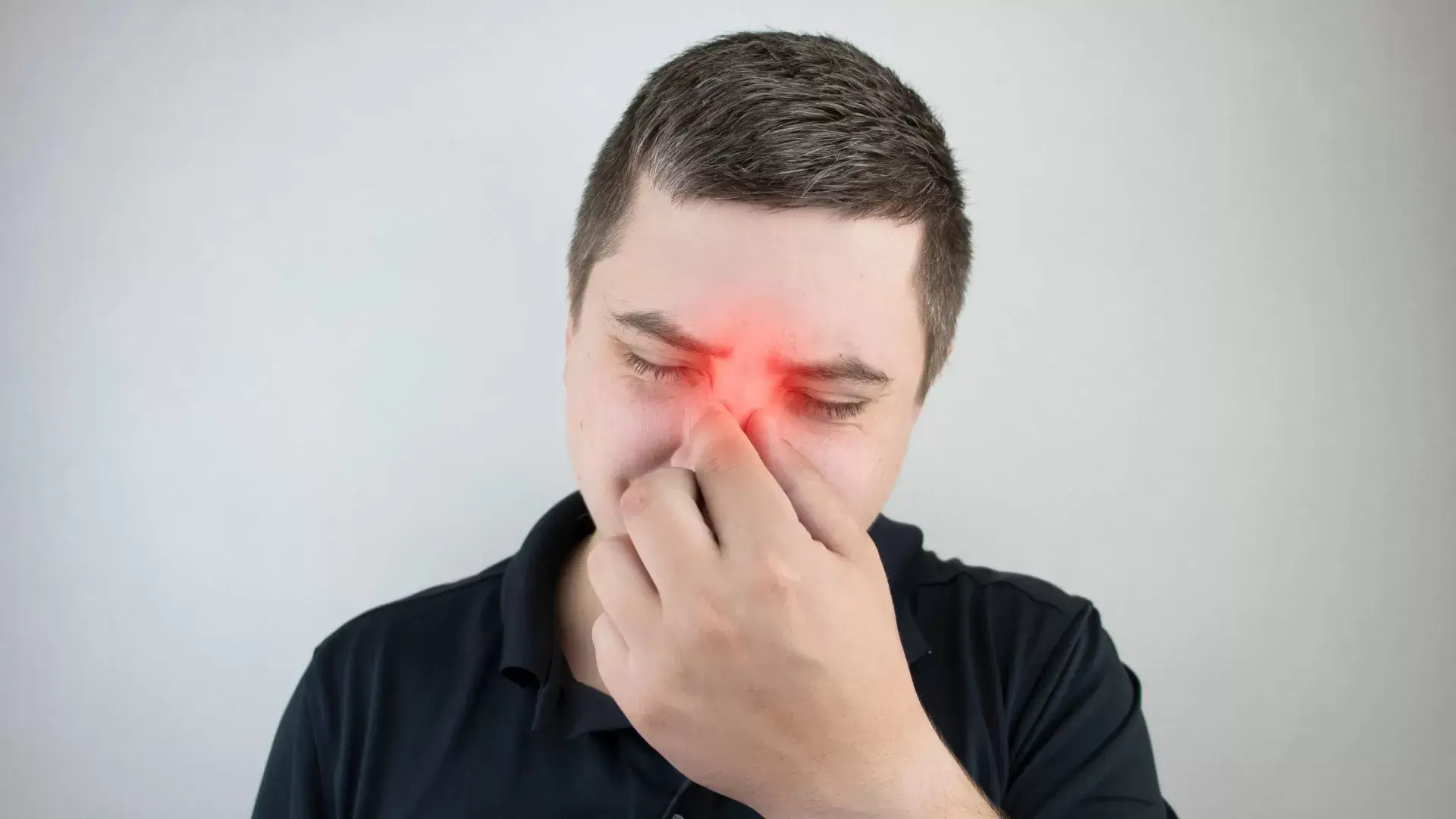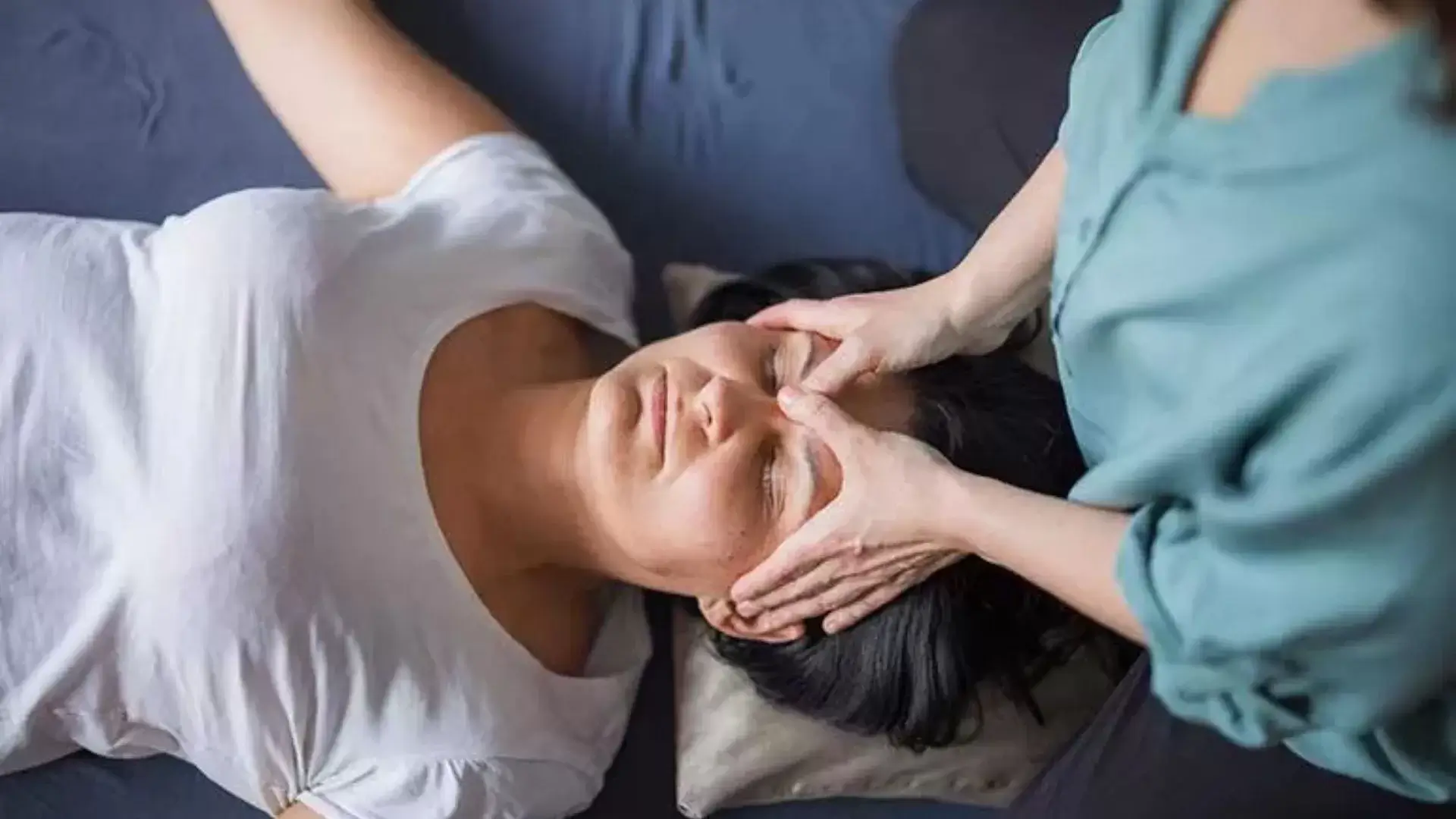As we explore the role of physiotherapy in managing sinusitis, it’s important to recognize that this condition can considerably impact our daily lives. By employing a variety of evidence-based techniques, such as manual therapy and personalized breathing exercises, we’re able to enhance sinus drainage and alleviate discomfort. This patient-centered approach not only addresses immediate symptoms but also equips us with strategies for long-term management. Understanding how these methods integrate with conventional treatments may surprise us and lead to better outcomes in our journey toward improved respiratory health. What specific techniques might be most beneficial for us?

At Physio Chiro Clinic, we specialize in providing evidence-based physiotherapy and chiropractic services tailored to meet the unique needs of each patient. Our approach is particularly beneficial for those suffering from sinusitis, where symptoms like nasal congestion and sinus pressure can greatly impact daily life.
We focus on techniques that promote sinus pain relief and help alleviate breathing difficulty. Through targeted physiotherapy interventions, we aim to improve functional breathing and enhance airway health. Our skilled practitioners utilize manual therapy and guided exercises that assist in inflammation reduction, addressing the root causes of discomfort associated with sinus conditions.
Incorporating chiropractic services into our treatment plan allows us to optimize the overall musculoskeletal health of our patients, which can further support sinus treatment. We recognize that each individual may present different symptoms and challenges, so we guarantee that our care is personalized and effective.
Sinusitis, an inflammation of the sinus cavities, can result from various causes and presents a range of symptoms that greatly affect our patients’ quality of life. We often encounter two main types: acute sinusitis and chronic sinusitis. Acute sinusitis typically arises from a sinus infection, often following a cold, and lasts for a short duration. In contrast, chronic sinusitis persists for more than 12 weeks and can result from ongoing sinus inflammation.
Patients frequently report symptoms such as a stuffy nose, nasal discharge, and postnasal drip. These symptoms can lead to significant nasal obstruction, making breathing difficult. Additionally, many experience facial pain and sinus swelling, which can be debilitating. Understanding the underlying causes—whether viral, bacterial, or even allergic—helps us tailor our approach to treatment.
We recognize the importance of addressing not only the physical symptoms but also the emotional distress that sinusitis can cause. By acknowledging these factors, we can work collaboratively with our patients to improve their overall well-being and quality of life, guiding them toward effective management strategies for their condition.
Recognizing the impact of sinusitis on our patients’ daily lives, we can explore how physiotherapy offers effective strategies for relief and improved sinus function. By employing specific techniques, we can help alleviate sinus headaches and facial pressure, ultimately enhancing our patients’ quality of life.
One key approach in our sinus therapy is manual techniques that promote sinus drainage, helping to clear congestion and provide sinus congestion relief. We encourage the use of nasal irrigation to facilitate the removal of mucus and irritants from the nasal passages, further contributing to sinus pressure relief.
In addition, we often recommend the use of a humidifier to maintain ideal moisture levels in the air, which can prevent dryness and support the immune system during recovery. While congestion medicine may provide temporary relief, our physiotherapy techniques aim for long-term solutions.
Several common conditions, such as allergies, respiratory infections, and structural abnormalities, can contribute to the development of sinusitis and sinus infections. For instance, allergic rhinitis can lead to chronic congestion, resulting in a blocked nose and nasal blockage that hinders normal sinus drainage. This blockage can cause mucus buildup, which may become infected, leading to sinus pain and discomfort.
Additionally, respiratory infections, including colds and the flu, can trigger inflammation in the sinuses. These infections often present with cold symptoms or flu symptoms, exacerbating sinus issues. When the sinuses become inflamed, it can further complicate drainage, creating an ideal environment for bacteria to thrive, ultimately resulting in sinus infections.
It’s vital to recognize these underlying conditions, as they can greatly impact our overall health and well-being. By addressing the root causes, we can better manage sinusitis symptoms and improve our quality of life. Understanding these common conditions allows us to seek appropriate sinus infection treatment and interventions, paving the way for effective symptom relief and long-term health. Knowing what leads to sinusitis can empower us to take proactive steps toward prevention and management.

Given the impact of underlying conditions on sinus health, exploring physiotherapy approaches for both chronic and acute sinusitis can provide valuable strategies for symptom relief and improved respiratory function. We often encounter patients experiencing swollen nasal passages and sinus congestion, which can greatly hinder nasal airflow and exacerbate discomfort.
One effective sinus congestion treatment involves the use of saline rinses, which help to flush out irritants and allergens, promoting clearer nasal passages. Additionally, we can incorporate nasal sprays to reduce inflammation and support nasal breathing. For those dealing with upper respiratory infections or environmental allergies, these techniques can be particularly beneficial.
Sinus drainage massage is another approach we utilize, helping to promote drainage and alleviate pressure. This gentle technique can enhance sinus flush, facilitating better drainage of mucus and reducing discomfort. By integrating these physiotherapy methods, we aim to empower patients to manage their symptoms effectively. Ultimately, our goal is to enhance overall respiratory function, allowing individuals to breathe more freely and improve their quality of life. Through a patient-centered approach, we encourage active participation in their sinus health journey.
Manual therapy techniques can greatly enhance sinus drainage and relieve pressure, providing patients with effective relief from the discomfort associated with sinusitis. By utilizing targeted sinus massage and manual techniques, we can help open up the sinus cavities, facilitating the drainage of mucus and reducing nasal congestion. This type of manual therapy not only alleviates pressure but also promotes overall sinus health.
Our approach often complements traditional treatments, such as sinus medication prescribed by an ENT specialist, as well as home remedies for sinusitis. We emphasize the importance of nasal hygiene, which can considerably aid in maintaining clear passages and preventing future issues. Patients often report feeling immediate nasal congestion relief following these hands-on techniques.
Through our evidence-based practice, we tailor our manual therapy methods to each patient’s unique needs, ensuring that they experience maximum pressure relief and improved sinus drainage. By integrating these techniques into a thorough treatment plan, we aim to empower patients in their journey to better sinus health, enhancing their quality of life. Ultimately, manual therapy serves as a valuable tool alongside other therapeutic approaches, fostering a holistic approach to managing sinusitis.
Incorporating targeted breathing exercises into our treatment plan can greatly enhance nasal airflow and help reduce blockage associated with sinusitis. These exercises not only promote sinus relief but also improve overall respiratory function.
We often recommend specific breathing techniques that can be easily integrated into our daily routines. For instance, practicing diaphragmatic breathing helps to open the airways and can alleviate congestion at night. Additionally, we might suggest combining these exercises with steam inhalation for improved effect, as moisture can act as a natural decongestant.
In some cases, using a sinus rinse can complement our breathing exercises by clearing mucus and allergens, further improving nasal airflow. While antihistamines and decongestants might provide temporary relief, incorporating breathing exercises can lead to lasting benefits.
It’s essential to remember that these techniques require practice and consistency for the best results. By committing to regular breathing exercises, we can greatly reduce blockage and enhance our quality of life. Together, let’s explore these methods to manage our sinusitis effectively and improve our breathing capacity.
Postural therapy can considerably enhance sinus drainage and airway health by promoting ideal body alignment and reducing pressure on the respiratory system. When we maintain proper posture, we open up airways and facilitate mucus drainage, which is essential for individuals suffering from conditions like sinus polyps or a deviated septum.
By focusing on postural therapy, we can address issues related to mouth breathing, which often exacerbates nighttime congestion and contributes to bacterial or viral sinusitis. When we align our bodies correctly, we alleviate the strain on respiratory muscles, thereby improving our overall breathing efficiency.
Incorporating specific exercises that promote upright posture not only enhances sinus drainage but also supports the effectiveness of treatments like nasal steroids. We’ve found that patients who adopt these postural strategies often experience significant relief from sinus congestion and improved respiratory function.
Ultimately, by integrating postural therapy into our daily routines, we can empower ourselves to take control of our airway health, reduce reliance on medications, and achieve a better quality of life. Let’s embrace postural therapy as a crucial component of our sinus health journey.

Addressing sinus health also involves understanding how allergy-induced sinusitis can complicate symptoms and hinder recovery, making physiotherapy an important tool in managing these conditions effectively. Many of us experience sinusitis triggered by allergies, such as hay fever, pollen allergy, dust allergy, or pet allergy. This often leads to increased nasal congestion and inflammation, worsening our symptoms.
Through targeted physiotherapy techniques, we can alleviate some of these complications. For instance, we may use manual techniques to promote sinus drainage or specific exercises to enhance our respiratory function. Additionally, integrating education about the use of corticosteroid sprays and antihistamine sprays can empower us to manage our allergy symptoms more effectively. Sinus decongestants might also be recommended to provide temporary relief, allowing us to engage more fully in our physiotherapy sessions.
Moreover, recognizing the interplay between our allergies and sinus health helps tailor our treatment plan. By addressing both the underlying allergies and their effects on sinusitis, we can considerably improve our overall well-being and recovery. Ultimately, physiotherapy offers a thorough approach to managing allergy-induced sinusitis, enhancing our quality of life.
Nasal irrigation and steam therapy are effective complementary treatments that can greatly enhance our sinus health and alleviate symptoms associated with sinusitis. By using a neti pot for nasal irrigation, we can help flush out mucus and allergens, reducing inflammation and promoting drainage. This is particularly beneficial for those suffering from fungal sinusitis, as it can help clear debris and prevent further complications.
Steam therapy, on the other hand, helps to moisten the nasal passages, making it easier for us to breathe and providing relief from sinus pressure. Inhaling steam can be done easily at home by using a bowl of hot water or a steam inhaler. We recommend incorporating these practices into our daily routine, especially during flare-ups.
For those who find these methods insufficient, it’s essential to consult with a healthcare professional. They may recommend more advanced treatments, such as balloon sinuplasty or even sinus surgery for chronic cases. If you’re located near 123 ABC Road, Oakville Ontario, feel free to contact us at 111-111-1111 for further guidance on managing your sinus health through these therapies.
While nasal irrigation and steam therapy can provide considerable relief, many patients may still struggle with issues like a deviated septum or nasal blockage, which can hinder their overall sinus health. In our practice, we’ve found that physiotherapy can be an effective complement to traditional treatments for these conditions.
By employing specific techniques, such as manual therapy and guided exercises, we can help patients improve nasal airflow and promote drainage. For instance, gentle manipulations can reduce tension in the surrounding muscles and tissues, thereby easing the blockage. We also teach patients breathing exercises designed to enhance lung capacity and facilitate better sinus function.
Furthermore, educating our patients on proper posture and body mechanics can considerable impact airway alignment, which may alleviate symptoms associated with a deviated septum. By fostering self-awareness and providing personalized strategies, we empower our patients to take an active role in their recovery.
Incorporating physiotherapy into the management of deviated septum and nasal blockage not only addresses symptoms but also enhances overall sinus health, leading to improved quality of life. We’re committed to guiding our patients toward effective solutions that can make a real difference.
In our practice, we recognize that physiotherapy can play an essential role in managing respiratory infections and alleviating sinus-related symptoms, particularly when combined with conventional medical treatments. Through targeted interventions, we can help patients improve their respiratory function, enhance drainage, and reduce inflammation.
One effective technique we utilize is manual lymphatic drainage, which can promote sinus health by encouraging lymphatic circulation. This helps in the removal of excess mucus and reduces sinus pressure. Additionally, we often incorporate breathing exercises to strengthen respiratory muscles and enhance lung capacity. These exercises can help patients experience improved airflow and reduced feelings of congestion.
Education is another critical aspect of our approach. We empower patients to understand their condition and the role of physiotherapy in their recovery, encouraging self-management techniques that can be practiced at home. By fostering a partnership with our patients, we aim to enhance their overall health and well-being.
Ultimately, our goal is to provide thorough care that not only addresses immediate symptoms but also supports long-term respiratory health. Combining physiotherapy with medical treatments enables us to deliver a holistic approach to managing respiratory infections and sinus-related issues.
Managing nighttime sinus congestion is crucial for improving sleep quality and overall well-being, as it can considerably affect our patients’ ability to rest and recover. We understand that when patients struggle with congestion, they often experience disrupted sleep patterns, leading to fatigue and decreased productivity during the day.
To address this issue, we can implement various strategies that promote better airflow and reduce inflammation. Elevating the head while sleeping can help gravity aid in sinus drainage, providing relief from congestion. Additionally, using a humidifier in the bedroom can maintain ideal moisture levels in the air, which may reduce irritation in the nasal passages.
Encouraging our patients to stay hydrated throughout the day is also important, as proper hydration aids in thinning mucus, making it easier to breathe at night. We can recommend saline nasal sprays to help moisturize and clear nasal passages before bedtime. Finally, guiding patients in practicing deep breathing techniques can alleviate anxiety and promote relaxation, enhancing sleep quality.
To further support our patients in overcoming sinus congestion and enhancing overall comfort, sinus massage and lymphatic drainage techniques can provide effective, lasting relief. These manual therapies focus on stimulating the lymphatic system and promoting drainage of excess fluids, which can alleviate pressure and discomfort associated with sinusitis.
Sinus massage involves gentle manipulation of the facial and sinus areas, applying pressure in specific patterns to encourage circulation and reduce inflammation. Research indicates that this method can help loosen mucus, making it easier to expel and consequently improving overall sinus function.
Lymphatic drainage, on the other hand, is a specialized technique aimed at facilitating the movement of lymph fluid. By enhancing this fluid’s flow, we can assist in reducing swelling and promoting healing. Both methods are non-invasive and can be easily integrated into our patients’ treatment plans.
Implementing long-term strategies for preventing chronic sinusitis can greatly enhance our patients’ quality of life and reduce the frequency of flare-ups. We need to focus on several key aspects. To begin with, encouraging our patients to maintain proper hydration is essential. Drinking plenty of fluids helps thin mucus, making it easier to drain and reducing blockage.
Next, we should emphasize the importance of nasal hygiene. Regular saline nasal irrigation can keep the nasal passages clear, effectively preventing the buildup of allergens and irritants. Additionally, educating patients about avoiding known triggers, such as smoke or strong odors, can greatly decrease their risk of sinusitis episodes.
We also recommend lifestyle modifications, including regular exercise and a balanced diet rich in anti-inflammatory foods. These changes can boost the immune system and enhance overall respiratory health. Finally, managing allergies through appropriate medication or immunotherapy can be critical for those affected.
Seeking the expertise of a physiotherapist can greatly enhance our approach to treating sinusitis, as they offer targeted techniques to alleviate symptoms and improve nasal function. Physiotherapists are skilled in manual therapy, which can help drain sinus cavities, reduce inflammation, and promote better airflow. Through guided exercises, they can teach us techniques to facilitate sinus drainage and improve our overall respiratory health.
When we reach out to a physiotherapist, we should expect a thorough assessment of our condition. They’ll evaluate our symptoms, medical history, and lifestyle factors before developing a personalized treatment plan. This plan may include breathing exercises, postural adjustments, and specific massage techniques aimed at relieving sinus pressure.
Moreover, physiotherapy can serve as a complementary treatment alongside conventional medical therapies. By integrating these approaches, we can enhance our recovery and reduce the frequency and severity of sinusitis episodes. It’s essential that we take an active role in our health, and collaborating with a physiotherapist can empower us with the tools we need to manage our sinusitis more effectively. In doing so, we can achieve lasting relief and improve our quality of life.
While we can’t guarantee a complete cure for any condition, we can say that effective management strategies exist. Our approach combines various therapies tailored to individual needs, focusing on alleviating symptoms and improving quality of life. It’s crucial to evaluate underlying factors and engage in an all-encompassing treatment plan. By working closely with healthcare professionals, we can optimize outcomes and enhance overall well-being, even if complete resolution isn’t always achievable.
When considering how often we should attend physiotherapy sessions, it typically depends on our individual needs and the severity of our condition. Generally, we might start with sessions once or twice a week, then adjust based on our progress. It’s crucial to communicate with our physiotherapist about our experiences and any improvements we notice, ensuring our treatment plan remains effective and tailored to our recovery journey. Consistency is key for best results.
When considering any treatment, it’s crucial to be aware of potential risks. In our experience, physiotherapy is generally safe, but we should note that some individuals might experience mild discomfort or temporary aggravation of symptoms. It’s important for us to communicate openly with our therapist about any concerns. By doing this, we can guarantee that the treatment is tailored to our needs and minimize any associated risks effectively.
When it comes to insurance coverage for physiotherapy treatments, we often find that it varies by provider and policy. It’s important to check with our insurance company to understand our specific benefits and any requirements, such as referrals or pre-authorization. Generally, many plans do cover physiotherapy, but confirming the details will help us avoid unexpected costs and guarantee we receive the necessary care for our health needs.
Yes, children can undergo physiotherapy for various conditions, including sinusitis. We believe that physiotherapy can be beneficial for young patients, as it focuses on personalized care and evidence-based techniques. It’s crucial to assess each child’s specific needs and circumstances, and we’d recommend consulting a qualified physiotherapist experienced in pediatric care. By working together, we can guarantee that children receive appropriate treatment to help alleviate their symptoms effectively.
Reach out to us today to book an appointment or learn more about our services. Our friendly team is here to answer your questions and help you take the first step toward improved health and wellness.
(647) 372-1209

At our Physio-Chiro Clinic, we are dedicated to providing personalized care that addresses the root cause of your discomfort. With a team of experienced physiotherapists and chiropractors, we focus on restoring your mobility, relieving pain, and enhancing your overall well-being.